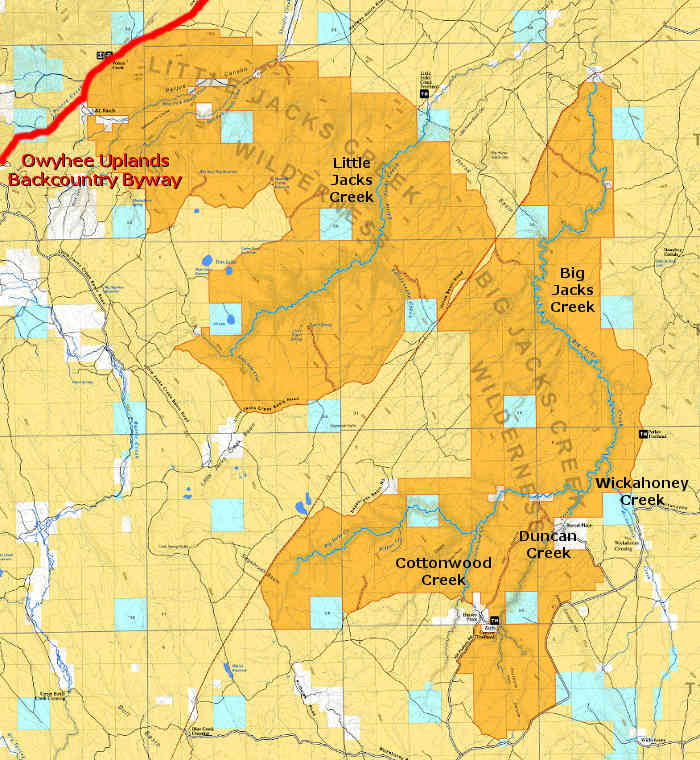Little Jacks Creek Wild and Scenic River

Looking down on Little Jacks Creek

12.4 miles of Little Jacks Creek, from the downstream boundary of Little Jacks Creek Wilderness upstream to the mouth of OX Prong Creek, is designated Wild & Scenic. Downstream from the wilderness boundary, there's only a few miles of river before Little Jacks Creek empties into the Bruneau River, another Wild and Scenic River with its own designated wilderness area.
A product of extensive volcanic activity during the Miocene Epoch (24 to 5 million years ago), the region is part of the Owyhee Canyonlands, the largest concentration of sheer basalt/rhyolite canyons in the western United States. Little Jacks Creek generally flows through a very narrow and deep canyon beneath sheer and multi-tiered canyon walls. In places, the drop from top to bottom is 1,000 feet. Even though Little Jacks Creek is a perennial stream, at no time is any part of it floatable. The necessary high snow seasons that happen every few years might provide enough waterflow for a canoe or a kayak but a put-in is just plain out of reach.
Little Jacks Creek flows through the sheer and multi-tiered basalt/rhyolite canyons in a varying meander with dense riparian vegetation along the canyon floor. Because of its rugged character, high water quality and long protection from livestock grazing, Little Jacks Creek supports the densest population of redband trout (a BLM-sensitive species and an Idaho species of special concern) in Idaho. The area is also known for its population of greater sage-grouse, bald eagles, yellow-billed cuckoos, ferruginous hawks, prairie falcons, several bat species, several neotropical migratory bird species, Columbia spotted frogs and western toads. The lava cliffs also support spotted and Townsend's big-eared bats, both Idaho BLM sensitive species.
Little Jacks Creek and the surrounding wilderness also provide habitat for mountain lions, mule deer, pronghorn antelope, bighorn sheep, mountain quail and sage hens. Large and mid-sized predators in the area include bobcats, cougars, coyotes, raccoons and badgers. Small mammals include mice, kangaroo rats, voles, squirrels, chipmunks, rabbits, weasels and skunks.
Most folks reach the area by traveling dirt roads around the northern, western and southern sides of the wilderness area. The canyon itself drops below an otherwise relatively flat plain. The area is well-known among hunters for its significant mule deer population, but seldom do they go down into the canyon. There is one established trailhead for the wilderness area that feeds to Little Jacks Creek: above the point where Little Jacks Creek exits the wilderness.

